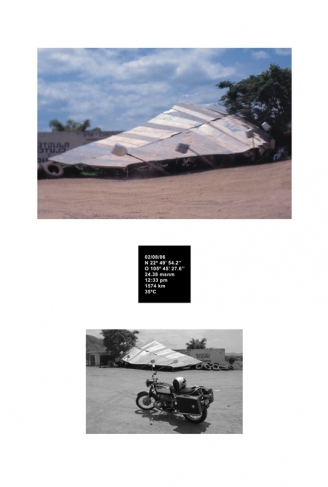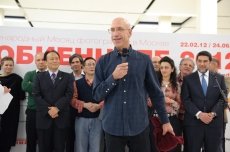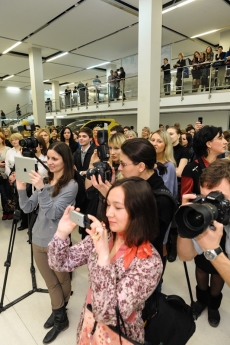R75/5 Toaster




© Galerie Laurent Godin, Paris
© Galerie Laurent Godin, Paris
© Galerie Laurent Godin, Paris
© Galerie Laurent Godin, Paris
Moscow, 30.03.2012—9.05.2012
exhibition is over
Central exhibition hall Manege
1, Manege Square (
www.moscowmanege.ru
Share with friends
Riding on a BMW motorcycle, Gonzalo Lebrija undertook a journey along the Peninsula Baja California. The choice of the vehicle for this action art is not free: the model in the series R75/5 has an accessory that Lebrija used as a working tool.
For the press
Indeed, the two chrome plates on the sides of its gas tank — which has given to the vehicle the nickname of toaster — is used by Lebrija as a mirror reflecting the landscapes that he re-treats with a camera along his journey. The result is a collection of 66 photographs that translate, as a chronicle of travel, the vicissitudes of Lebrija through the Bajacaliforniano territory. The works of Gonzalo Lebrija always have a strong nature of stage performance. His photographs record actions where there are doses of courage and sense of epic. The solitary journey in the desert, camping opencast, evokes the screenplay of a film in which the protagonist is undertaking an adventure, male and tragic, following an impetus and imprecise boost, which is confronted to nature and quest for oneself.
However, the sober and elegantly formal handling of Lebrija conceals the strong emotional charge of his work. The synthetic and severely balanced compositions give to these photographs some sort of unpleasant distance, as if the artist were a dandy who doesn’t allow any kind of sentimentality. However, under the cold surface, remains the assertion that it is still possible to undertake actions of defiant individuality like those that once, in a mythical past, humans have done, leaving their footprints over time. In this way, the motorcycle (a kind of parody of the ‘motorcycle courier’) doesn’t become just a means of transport, but also the fetish incarnated by a symbolization that brings us back to the immediate identification to real and fictional characters, like Ulysses, Captain Ajab, Ernest Hemingway, James Dean, Marlon Brando, Peter Fonda, etc. By capturing images through the metallic and curved surface of the gas tank, Lebrija uses the motorcycle as a medium. The action fits the role that the artist assigned to himself in this story. Indeed, heroes are not accustomed to talk about themselves. At the best, they would do it obliquely, as in this case, through the slight deformation of the landscape made by the board, and the added brightness by the chrome plate, that the alert viewer would interpret as the keys to decrypt out the author’s codes and enter the beautiful refractory surface of his pictures. One the other hand, this project is the culmination of a visual investigation that Lebrija has developed over the past years. In 2000, he directed a wide range of photographs entitled Autopaisajes, which, as its name suggests, is the reflection of evanescent urban scenes captured on the surface of multicolored automobiles. Then in 2005, invited by the protected UNESCO patrimonial sites program, Lebrija introduced a Ferrari in the chapel of the Instituto Cultural Cabañas, in Guadalajara, to make a snapshot of the mural Hombre de fuego, José Clemente Orozco, projected on the Italian red car’s bodywork, providing an original metaphor of energy and power. Carlos Ashida
Lebrija was born in Mexico City in 1972, and received his BFA at the Instituto Tecnológico de Estudios Superiores de Occidente ITESO, Guadalajara. He is co-founder and director of Oficina Para Proyectos de Arte (OPA), a non-profit exhibition space in Guadalajara. Gonzalo Lebrija’s most recent shows include: Resisting the Present (group) at Musée d’Art Moderne de la Ville de Paris and at Museo Amparo, Trou Noir (solo) at Galerie Laurent Godin, The Distance Between You and Me (group) at Vancouver Art Gallery, Deriva Especular (solo), Museo de Arte Moderno, Mexico, Energy Effects (group) at MCA Denver, Esquiador en el fondo de un pozo, Jumex Collection by Michel Blancsubé, Mexico City... The R75/5 Toaster project was exhibited at the Museo de Arte Carrillo Gil, Mexico City (2006) and at Galerie Laurent Godin, Paris (2008).








































